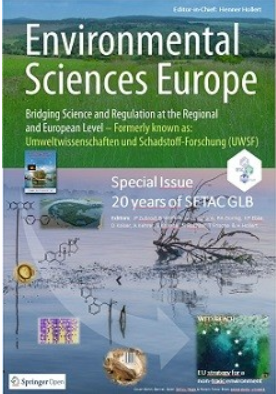A new approach to using Diffusive Gradient in Thin-films (DGT) labile concentration for Water Framework Directive chemical status assessment: adaptation of Environmental Quality Standard to DGT for cadmium, nickel and lead
Abstract
Integrative passive samplers, such as DGT (Diffusive Gradients in Thin-films), are identified in European Technical Guidance Documents as promising tools to improve the quality of the assessment, in the context of the WFD (EU Water Framework Directive). However, DGT results cannot yet be used directly in a regulatory framework to assess the chemical status of water bodies, as DGT labile concentrations cannot be directly compared to the metal AA-EQSmarine water (Annual Average Environmental Quality Standard) established by the WFD, which are defined in the dissolved concentration. Therefore, prior to using DGT results in a regulatory context, for cadmium, nickel and lead, an adaptation of existing AA-EQSmarine water for DGTs should be pursued, ensuring at least the same level of protection. In this sense, in the framework of the MONITOOL project, a robust database of dissolved and labile metal concentrations in transitional and coastal waters, for adapting the existing AA-EQSmarine water for DGT technique, was obtained. Building on these results, this study proposes a methodology and provides values and equations for using DGT results for the chemical status assessment of marine waters, by adapting the EQSmarine water to adapted EQSDGT or predicting dissolved concentrations from DGT results. Based on available dataset, a first simulation of “chemical status” assessment per MONITOOL sampling site using DGT measured labile concentrations was carried out and the results were compared to an assessment based on dissolved concentration to check their compliance. These results demonstrate that the use of DGT passive samplers is appropriate for the metal concentrations level encountered in the marine environment. Further work is recommended to test the effectiveness of the methodology proposed in this study under WFD conditions on more sites and to establish common strategy guidelines for the use of DGT passive samplers in monitoring.

 求助内容:
求助内容: 应助结果提醒方式:
应助结果提醒方式:


